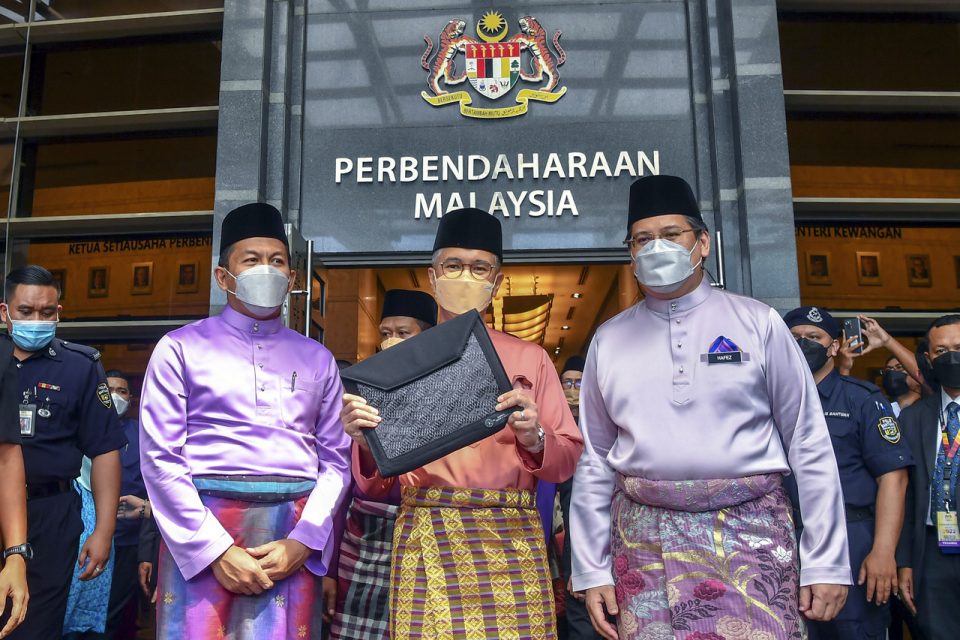KUALA LUMPUR, Oct 30 — Budget 2022 is clearly a pragmatic financial blueprint, premised on extensive financing including concessionary loans for stakeholders to ensure growth and comprehensive economic recovery.
These stakeholders include micro, small and medium enterprises (MSMEs) as well as large firms, where sufficient funding would stimulate business activities and generate jobs, putting Malaysia firmly on the path to economic recovery.
With recovery not forthcoming as anticipated this year, Finance Minister Tengku Datuk Seri Zafrul Abdul Aziz must have seen it prudent to return to basics in ensuring adequate funding to ensure resilient businesses.
Hence the largest ever budget with an allocation of RM332.1 billion, which includes RM233.5 billion for operating expenditure and RM75.6 billion for development expenditure, for which the government must be lauded for sparing no efforts to push growth.
One of the highlights in Budget 2022 was the setting aside of RM40 billion for the ‘Semarak Niaga Keluarga Malaysia’ financing package — a substantive initiative that will undoubtedly have wide spillover effects on businesses, including Bumiputera ventures.
Of the RM40 billion for MSMEs, some RM1.8 billion has been set aside for micro and informal businesses as well as public-listed firms, where the funds will be utilised through various methods, including equity injection, as well as allocations through TEKUN, Agrobank, Bank Simpanan Nasional and others.
It must be noted that the financing initiatives also includes easy and interest-free financing to support micro-entrepreneurs as espoused by Prime Minister Datuk Seri Ismail Sabri under the ‘Keluarga Malaysia’ concept.
A major inducement warranting the large amounts of financing was that despite eight assistance packages worth RM530 million dished out by the government since the start of the pandemic, recovery has not been up to expectations.
The proposal is also timely as these stakeholders in the economy clearly continued to need financial assistance to operate after being battered by the COVID-19 pandemic.
It is shocking that 37,000 SMEs have closed down since the pandemic, with serious repercussions on jobs, the economy and livelihoods.
This is why such a major funding initiative must be lauded as it provides a fillip to the projected recovery next year, including the creation of 600,000 job opportunities.
The rising popularity of equity crowd-funding has also been given a boost with an allocation of RM80 million in matching grants for the Malaysia Co-investment Fund, in addition to the RM100 million investment by Bank Pembangunan Malaysia Bhd.
The initiative is aimed at increasing the use of cloud computing and boosting the use of cloud storage in public services to 80 per cent next year.
To this end, Malaysia needs to intensify its digitalisation efforts as this will help to accelerate economic recovery.
Another welcomed proposal in the budget is the allocation for the Fourth Industrial Revolution (IR 4.0) transformation, drone industry development, e-sports, and startups as it augurs well for the digital agenda.
Allowing tax deductions of up to RM7,000 for upskilling courses would boost this effort and complement the JaminKerja initiatives in creating 600,000 job opportunities.
Listed companies would also be given financial assistance through a government-owned Special Purpose Vehicle in the form of equity instruments, which goes to show that both big and small firms need financial injections.
It is this strategy to provide comprehensive funding that gave the government the confidence to project an economic expansion of 5.5-6.5 per cent next year.
The special fund of RM2 billion to encourage foreign strategic investments is vital, and this includes steps to lure high-impact investments and pursue new export markets to ensure that Malaysia remains an attractive foreign investment destination.
This also entails penetrating markets for halal products and services from Malaysia, for which RM25 million has been made available for the Halal Development Corporation.
Government-linked companies (GLCs) have also not been left out, given their contribution to the economy, with RM30 billion allocated for capital expenditure and investments to build their resilience and investment in areas including renewable energy, supply chain modernisation and 5G.
Rehabilitating and catalysing the reform of several targeted sectors such as the tourism, creative, retail, agriculture and commodity industries is crucial so that they can resume operations at maximum capacity.
As for the prosperity tax, it is much fairer as it is a one-off tax compared to a windfall tax and will not affect Malaysia’s investment climate.
The government had also announced full exemptions of import duty, excise duty, as well as sales tax for electric vehicles (EVs) as well as 100 per cent road tax exemption for EVs, which certainly is a right step in the journey towards achieving energy efficiency.
Being energy efficient, EVs would help reduce air pollution, demonstrating Malaysia’s commitment to addressing climate change and saving the environment.
Budget 2022 is not a ‘business-as-usual’ budget as it takes into account the immense difficulties Malaysia and the global economy are facing against the onslaught of the pandemic.
But with a high 95 per cent vaccination rate to date, strict standard operating procedures and combined resourcefulness of the people under the Keluarga Malaysia concept, Budget 2022 would certainly shine some light at the end of what has so far been a perilous tunnel.
— BERNAMA





